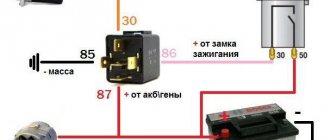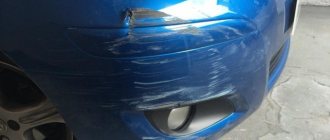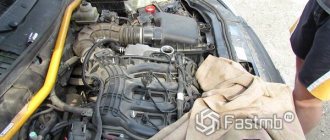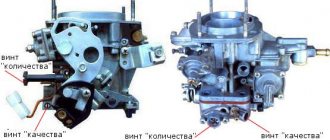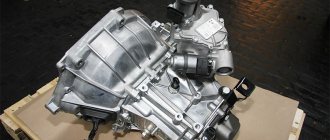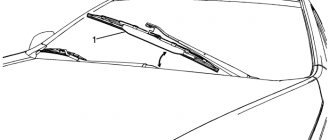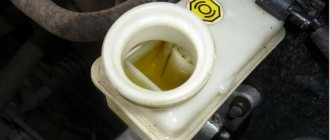Flywheel balancing is a necessary procedure to balance the rotating masses, eliminate inertial forces and ensure long-term operation of this part. If the rotating elements of an internal combustion engine are unbalanced, vibrations can occur, which significantly shortens the life of the engine and its components, such as the starter, driveshaft, and crankshaft.
The flywheel can be one of the sources of vibration, which is why it is necessary to balance it. This part engages the starter drive gear, which must be taken into account when preparing for the procedure for eliminating imbalance. Engine tuning also involves the use of a procedure such as grooving the flywheel. This manipulation involves removing the worn surface of the part, which is very important for its effective operation. Such grinding is an important balancing step to eliminate the negative impact of the manipulations performed on the operation of engine elements, such as the starter, crankshaft, and driveshaft.
Why is balancing necessary, and how to balance a flywheel?
Due to the fact that the mass is distributed unevenly throughout the product, when it rotates, variable loads arise on it due to the action of inertial forces, which, as is known, are proportional to the magnitude of the mass and the square of the speed. Such changing forces lead to vibration, which has a destructive effect on the mechanisms, causing their premature wear, reducing the efficiency and economy of the machines.
Thus, balancing, i.e. balancing of rotating masses, eliminates the influence of inertial forces and provides conditions for long-term and efficient operation of the mechanism. Returning to our internal combustion engine and the use of a flywheel after its lightening associated with the removal of metal, it should be noted that unbalanced masses arise in this case. Therefore, before installing it in a car, the flywheel must be balanced in order to eliminate negative effects on the engine due to the modifications made.
There are several types of imbalance:
- Static. It occurs when a certain load or mass appears in relation to the axis of the device. This will be equivalent to a displacement of the device axis itself relative to the axis of rotation. Such a displacement will serve as a source of vibration.
- Momentary, when additional masses arise at the edges, for example, of a flywheel. In this case, although the masses are balanced and do not manifest themselves in any way in a static state, they create strong vibration when rotating.
- Dynamic imbalance, which is the simultaneous impact of the first two. It is to eliminate this that wheels are balanced in a tire shop.
Elimination of various types of imbalance is usually done using special equipment, but the same flywheel can be balanced at home using improvised means. In any case, static balancing of the flywheel is thus quite simple.
What is a dual mass flywheel used for?
The dual-mass flywheel is a powerful torsional damper. It more successfully replaced the shock-absorbing springs that were previously installed in the clutch disc, which was paired with a single-mass flywheel.
In most cases, the dual-mass flywheel was used in cars with diesel engines, but recently it has become actively used in cars with gasoline engines. The part is installed only in conjunction with dual-clutch transmissions and certain types of CVTs. DMF is able to smooth out the operation of the gearbox even in the most extreme conditions.
In cars with a traditional flywheel, increasing the speed in high gear from a low speed, in most cases, causes powerful vibrations throughout the body.
New cars with this part do not experience these symptoms at all. All thanks to the dual-mass flywheel, namely powerful springs that successfully absorb most of the torsional vibrations.
Balancing the flywheel at home
As already noted, static balancing is the easiest to perform. It can be carried out in different ways, using auxiliary means and tools, based on the availability of the latter. In this case, it is necessary to be guided by the fact that when the flywheel hangs freely, it will be installed in a position in which its heaviest part will be located at the bottom.
To determine this position, the flywheel is positioned so that it can rotate freely on its supports. This can be done by securing it to a shaft placed on supports, which can be angles, as shown in the figure.
Or, for this purpose, a vice can be used, in which the shaft on which the flywheel is mounted on bearings is clamped. Under its own weight, it will begin to rotate and will stand in the lower position with its heaviest part. Now all that remains is to remove the excess metal from the heavy side, and we can assume that the flywheel has been balanced.
To balance, in addition to removing excess metal, additional weights are installed on the opposite side, thus leveling the distribution of masses. However, it is more common to drill out excess metal in a heavy area, lightening it and balancing the masses.
Additional information about static balancing can be obtained by watching the video » alt=»»>
» alt=»»> As for dynamic balancing, it must be carried out using special equipment and it is hardly possible to perform it in a garage. Although there are reports that such balancing is also carried out using improvised means.
Balancing and why it is needed
The weight is distributed across the flywheel intermittently and unevenly. During the rotation, transient loads are formed, which appear due to the action of inertial forces commensurate with the set of mass-velocity parameters multiplied by themselves.
All these loads and changing forces have a disastrous effect on the elements of the car, provoking their untimely wear, reducing their productivity and break-even.
Balancing or symmetry of skidding masses reduces the influence of inertial forces, thereby ensuring long-lasting and highly efficient functioning of the mechanism.
Balancing the flywheel is especially necessary when the element is undergoing modernization. The procedure will help eliminate negative impacts on the internal combustion engine, which may be caused by the modifications carried out.
Modernization, as a rule, involves replacing the standard flywheel with a lightweight one.
It will be useful to know that there are types of imbalance. Let's take a closer look at them.
- The imbalance is static, which occurs when a mass or some kind of load appears in relation to the axis of the device. Such an imbalance is equivalent to an axis displacement. Negative consequences - strong vibrations.
- The imbalance is momentary, i.e., it occurs at the edges of the flywheel. It is caused by additional masses that do not appear in static conditions, but arise during rotation and become sources of strong vibrations.
- Asymmetry of the dynamic type, which is a combined version of the imbalance. In other words, this is the simultaneous impact of static and moment imbalance, which has an extremely negative effect on the condition of the vehicle components (it is more common in tire repair; as a rule, it does not occur among flywheel problems).
Repair of dual-mass flywheels DSG from Automatic Transmission Service 24
We service all types of DMMs. Before starting maintenance, the technicians send the car for comprehensive diagnostics: computer, visual, hydraulic, mechanical. Based on the results of the diagnostics, an estimate is generated, agreed upon with the car owner, then the assembly mechanics begin to restore the DMM.
Repair of dual-mass flywheels DSG in our service includes:
- Removal of DMM.
- Disassembly of the device.
- Washing flywheel components.
- Grinding (including the clutch pressure plate).
- Replacement of the crown and all flywheel internals with new reinforced parts.
- Assembling the device, painting.
- Balancing the clutch pressure plate and clutch pressure plate.
After repairing the dual-mass flywheel, balancing and installing it, we carry out final diagnostics. The owner picks up the car after a test drive and checking the quality of technical service.
Do you want to get your DSG working again? Do you need to restore the gearbox DMM? Call the experts at Automatic Transmission Service 24: +7 926 733-34-83. We will send a tow truck for your car free of charge, carry out diagnostics, repair the dual-mass flywheel DSG and provide a warranty of up to 3 years.
How and where balancing is done
The setup is carried out both on special equipment and at home. It all depends on financial capabilities. However, you should know that in the garage it will be possible to neutralize static imbalance, but to neutralize torque or combined imbalance you need a professional stand.
Adjusting the flywheel in a vice
Much has been written about how to balance a flywheel without professional help. The easiest way, as mentioned, is to make adjustments that minimize static imbalance. It is performed in different ways, but the more common procedure is using handy means and some tools.
When balancing with your own hands, it is important to take into account the nuance from physics that freely hanging the flywheel will lead to the fact that its heaviest side (point) will stop at the bottom.
For smooth operation, the flywheel is placed so as to ensure free rotation on the supports.
Here's what to do:
- install two squares, fix them;
- fix the flywheel on the shaft;
- place the shaft with the flywheel on the corners (see photo).
If it was not possible to find squares of a suitable type, then a vice can be used as a holder. A shaft is clamped into them, onto which a flywheel on bearings is threaded in advance.
Hanging in a free position, the flywheel will a priori stand with its heaviest side down, according to the law of physics, if it is rotated. In other words, it will stop with the heaviest part at the bottom (marked with a marker dot), every time it rotates. By removing excess metal from this particular part of the element, it will be possible to adjust the flywheel. In this spirit, the parts of the flywheel are balanced.
Attention. The flywheel bearing must be clean, otherwise seizures may occur. It is also recommended to lubricate it with a silicone compound to make the element rotate more easily.
If the flywheel stops with its lower part at different points after each rotation, this only indicates that the product has been well balanced. In addition, it should not turn back after stopping, which also happens with improper balancing.
Video "Balancing the crankshaft"
This video demonstrates how to properly balance a crankshaft.
It happens that on an engine it is necessary to replace the flywheel, its ring gear or clutch basket, and after replacing the listed parts, and even after replacement (after flushing the oil channels), it must be balanced. If you neglect this operation, then your engine, even when the vehicle speed increases to only 70 km/h, will begin to vibrate strongly due to imbalance. Naturally, this cannot be allowed, and the crankshaft must be balanced before installing it on the engine. How to make a simple balancing device in just a couple of hours, and what you will need for this, we will look at in this article.
Most automobile or motorcycle factories balance their crankshafts assembled with a flywheel and clutch basket, and some, such as the crankshaft of the Dnepr motorcycle or Zaporozhets car, also balance the assembly with a centrifuge. This must be taken into account and before balancing, put all the parts on the crankshaft, and even a pulley or gear on the front part of the shaft, if, of course, they exist in the design of your engine.
Well, of course, all the connecting rods assembled with pistons, rings and pins will need to be weighed and ensure that they weigh absolutely the same. Many factories (usually domestic) neglect this, so I advise you, even during the first engine repair, to weigh the above listed parts and if there is a difference in weight, eliminate it (by removing excess metal).
By the way, when boosting the engine, many mechanics lighten the flywheel by grinding it, and after lightening the flywheel, it is also necessary to balance the crankshaft, complete with a lightweight flywheel.
Crankshaft balancing device.
The balancing device, which will be described in this article (see photo), is very simple and can be made by anyone, even an inexperienced driver in plumbing. To work, you will need a little profile pipe, or angle, a steel bar with a diameter of 12 - 16 mm, (can be a construction one), a grinder, etc.
First you will need to make a base - a frame measuring approximately 400 x 400 or 500 x 500 mm, which is welded from a corner or profile pipe (the width of the corner or pipe is 45 - 60 mm). In general, the dimensions of the frame and the device itself depend on the length of your crankshaft, because if you need to balance the crankshaft from a truck, then naturally this device will need to be made in larger sizes.
After you weld the frame and clean the welds, you will need to drill holes in the two corners of the frame (numbers 1 and 2 in the photo) and in the middle of the opposite pipe (number 3 in the photo) (their diameter depends on the thickness of the rod from which they are made studs). Nuts are welded to the holes on top, the diameter of the internal thread depends on the diameter of the three studs that you buy or make from a rod.
Why are there only three studs and not four in each corner of the frame? Because in order to set the frame strictly horizontally before balancing (using a level), it is enough to twist only three pins, and the fourth only complicates the adjustment. You will also need to screw locknuts onto each stud, which will be locked after adjusting the frame. At the top of each stud, it is useful to sharpen two flats for a wrench with a grinder, so that later it is easy to twist them when adjusting the level.
Now you will need to drill four holes with a diameter of 14 - 16 mm closer to each corner of the frame. 4 studs (stands) made of a rod, approximately 14 - 16 mm thick, and approximately 250 mm long (the length of all four studs are absolutely the same) are inserted into these holes and clamped with nuts.
Now, on the top of each pair of studs - racks, you need to put two corners (20 - 40 mm wide and approximately 300 mm long) corners (before this, we drill holes in the corners). We put the corners on and weld them so that their sharp edge is at the top; the crankshaft will be placed on this edge. You will get two U-shaped racks located opposite each other (like two horizontal bars). That's all - the device for balancing the crankshaft in the garage or even at home is ready!
Crankshaft balancing.
Before balancing, you first need to set the device strictly horizontally, relative to the force of gravity of the Earth. To do this, first place the level on the corner (20 mm) of the U-shaped post located near the numbers 1 and 2 and twist the pins 1 and 2 until we achieve its absolutely horizontal position and, accordingly, the corner on which it lies.
Then we turn the level perpendicularly and lay the level across, that is, on two corners of both U-shaped posts at once, and by rotating pin 3 we achieve an absolutely horizontal position of the entire device as a whole.
Having aligned the device exactly horizontally, you can place the crankshaft assembly on it with parts as in the photo. If there is an imbalance, the crankshaft will immediately begin to rotate, that is, roll along the edge of the corners until the center of gravity of the parts is at the lowest point (the Earth’s gravity helps us). Naturally, this imbalance (overweight) needs to be eliminated.
To eliminate the excess, you need to drill out excess metal in the heaviest (bottom - indicated by an arrow in the photo) part of the flywheel to remove excess weight. But how can you find out exactly this weight? To do this, you need to glue magnets of different weights or pieces of a large magnet to the lightest opposite side of the flywheel (at the top) (you can break the magnet from the speaker into pieces).
You will need to add (glue) magnets to the flywheel until the crankshaft assembly with parts, no matter how you turn it at the corners, should lie motionless (not roll to the right or to the left). All the magnets that were glued need to be weighed, and this exact weight will be the preponderance (imbalance). Now there are a lot of Chinese electronic scales on sale - you will need to buy them, they are not expensive (or ask them to weigh the magnets in the store).
Now you will need to drill out enough metal from the flywheel so that the weight of the chips is the same as the weight of the magnets that compensated for the imbalance. When drilling, it is advisable to place a cloth under the flywheel so that the chips can be collected and weighed. But practically one drilling of a hole (about 7 - 8 mm) is always not enough, and you have to drill several. If you have a milling machine, you can mill out the excess metal in the flywheel. But the main thing is not to overdo it in this matter, otherwise you will have to drill on the opposite side of the flywheel later.
By the way, if you have a pulley, gear or centrifuge at the other end of the crankshaft, and you changed them and not the flywheel, then you will need to balance these parts together (as in the photo) and drill out excess metal in them, and not in the flywheel. Well, if you changed the clutch basket, then you need to balance your crankshaft with the basket attached to the flywheel (here you can drill out excess metal in the basket, where there are holes for its fastening).
And finally, I’ll add that this device can also be used to check the crankshaft runout using a dial-type indicator stand. To do this, you will just need to drill two holes in the upper corners (on which the crankshaft is placed) and attach two prisms to them, on which the crankshaft will subsequently be placed, to check its runout with a dial indicator.
I hope this article will help all drivers who like to do everything on their car themselves, and who, using this device, can easily balance the crankshaft in their garage.
To complete the picture, and so that everyone understands how balancing the crankshafts of any engine affects the smoothness of its operation, watch the video below; good luck to everyone!
The crankshaft, being one of the most important structural elements of the power unit of any car, is produced using quite complex technologies. The inevitable presence of technological tolerances and errors in this process, as well as the heterogeneity of the materials used in this process, together with gaps in the interfaces of parts and assemblies, violate (albeit slightly) one of its main operating conditions - balance.
How to determine the need for crankshaft balancing. The main symptoms that help to establish with a high degree of certainty the presence of a “disease” are significant fluctuations in the power unit and gear shift lever when the car is idling.
And then you have to resort to performing such an action as balancing the crankshaft. It (balancing) consists of selecting additional masses, or balancing weights, as well as removing metal in the planes of location of these weights from the side diametrically opposite. These measures are carried out in special areas of the crankshaft, called balancing sections.
Correcting Various Flywheel Imbalances
Flywheel balancing is a necessary procedure to balance the rotating masses, eliminate inertial forces and ensure long-term operation of this part. If the rotating elements of an internal combustion engine are unbalanced, vibrations can occur, which significantly shortens the life of the engine and its components, such as the starter, driveshaft, and crankshaft.
The flywheel can be one of the sources of vibration, which is why it is necessary to balance it. This part engages the starter drive gear, which must be taken into account when preparing for the procedure for eliminating imbalance. Engine tuning also involves the use of a procedure such as grooving the flywheel. This manipulation involves removing the worn surface of the part, which is very important for its effective operation. Such grinding is an important balancing step to eliminate the negative impact of the manipulations performed on the operation of engine elements, such as the starter, crankshaft, and driveshaft.
Why does the part wear out?
Contrary to many popular opinions, one of the main reasons for the failure of a dual-mass flywheel is not the low quality of the part. Yes, not without this, manufacturers often make mistakes during production.
The main enemy of dual-mass flywheels is the excessively high torque of powerful modern car engines. They differ from older models in the high pressure that is formed in the fuel combustion chambers.
In addition, power units are manufactured by manufacturers from light alloys, which negatively affect reliability and cope much worse with vibrations.
Types of imbalance
In order to understand how the balancing procedure is carried out, you should understand the types of imbalance:
- Static. Develops as a result of displacement of the axis of the part in relation to the axis of rotation. This provokes vibrations.
- Moment. Possible when additional masses appear at the edges of the flywheel. In this case, the masses are balanced, but do not manifest themselves statically. However, when rotated, they provoke pronounced vibration.
- Dynamic. Determined by the combined action of static and moment imbalance.
Vibrations can increase or decrease depending on the rotation speed. They provoke additional load on engine elements (starter, driveshaft, crankshaft), and also lead to loosening of fasteners. In turn, this can lead to malfunctions and reduced service life and malfunctions of engine components: flywheel, clutch, crankshaft and others.
The reasons for the imbalance include:
- incorrect manufacturing of engine components, such as flywheel, starter, crankshaft and others;
- heterogeneity of the material;
- inaccurate centering of fastened parts;
- increased clearances of fastened elements and assemblies, as well as non-compliance with alignment during installation;
- deformation of shafts during mechanical and thermal treatment and as a result of damage during use.
Vibrations can occur in the absence of balancing of both the flywheel and other parts of large diameter and significant angular velocity: the driveshaft, crankshaft, wheels and clutch.
Elimination of imbalance is carried out using specialized equipment in car service centers. Self-balancing is also possible. You just need to remember that before carrying out the procedure, you should disconnect the starter, which engages the flywheel, from the power supply.
Signs and causes of imbalance
The main sign of an unbalanced driveshaft of a car is the appearance of vibration.
the entire body of the machine. Moreover, it increases as the speed increases, and depending on the degree of imbalance, it can appear both at a speed of 60-70 km/h and at more than 100 kilometers per hour. This is a consequence of the fact that when the shaft rotates, its center of gravity shifts, and the resulting centrifugal force “throws” the car on the road. An additional sign in addition to vibration is the appearance
characteristic hum
emanating from under the bottom of the car.
Imbalance is very harmful to the transmission and chassis of the car. Therefore, when the slightest signs of it appear, it is necessary to balance the “universal shaft” on the machine.
Neglecting a breakdown can lead to such consequences
There are several reasons for this breakdown. Among them:
- natural wear
of the part during long-term use; - mechanical deformations
caused by impacts or excessive loads; - manufacturing defects
; - large gaps
between the individual elements of the shaft (if it is not solid).
The vibration felt in the cabin may not come from the driveshaft, but from unbalanced wheels.
Regardless of the reasons, if the symptoms described above appear, it is necessary to check for imbalance. Repair work can also be done in your own garage.
Carrying out balancing
Static balancing is easy and can be done at home. It is possible to balance the flywheel using auxiliary tools and equipment. First you need to remove the part, to do this you need to drive the car into the inspection hole, then turn off the power that the starter uses (it engages the flywheel), and only then remove the element. It should be taken into account that hanging the flywheel freely leads to the installation of a position of the part in which the heaviest area will be localized at the bottom. To determine the position, the flywheel should be positioned so that it rotates freely on the supports. This can be done by securing the part to a shaft that is placed on supports. At the same time, corners act as them. A vice is also used for this, in which a shaft with a flywheel mounted on bearings is clamped. It rotates under its own weight and is installed with the heavy section in the lower position. After this, the flywheel is grooved, that is, excess metal is removed from the heavy side (grinding).
In addition, balancing involves installing additional weight on the opposite side. This equalizes the distribution of masses. But flywheel grinding, or grinding, is a more common procedure. With its help, the heavy part of the part is lightened and the mass is balanced. After this, the flywheel is installed back, and the starter that hooks it is connected to power.
The dynamic balancing procedure should be carried out in a professional car service center. To implement this, specialized equipment is required. The peculiarity of the procedure lies in its joint nature: the imbalance is eliminated simultaneously for the flywheel, clutch and crankshaft. In this case, just as with static balancing, the power that the starter uses is turned off, which engages the flywheel.
Thus, it is possible to balance the flywheel yourself - grinding is a fairly simple procedure, but dynamic balancing should only be carried out with the involvement of specialists, since it requires eliminating the imbalance jointly for the crankshaft, clutch and flywheel and involves a rather complex algorithm of actions using complex equipment and tools. In addition, grinding carried out in the service has a more positive effect on the operation of the car engine.
Source
Where to balance the crankshaft - repair options
There are two ways to balance the crankshaft. The first is static, it is less accurate. In this case, special knives are used, on which the part is installed. And the imbalance is determined by its position during rotation. If the upper part of the crankshaft is lighter than the lower part, then weights are attached to it and such measurements and additional loading are made until balance is achieved. And only after that, holes for the counterweight are drilled on the opposite side.
The second type is dynamic balancing of the crankshaft. To carry it out, special equipment is required. The crankshaft is installed in floating beds and spun to the required speed. The light beam finds and scans the heaviest point that provokes shaking, and displays it on the screen. And to achieve balance, the only thing left to do is remove excess weight from it.
